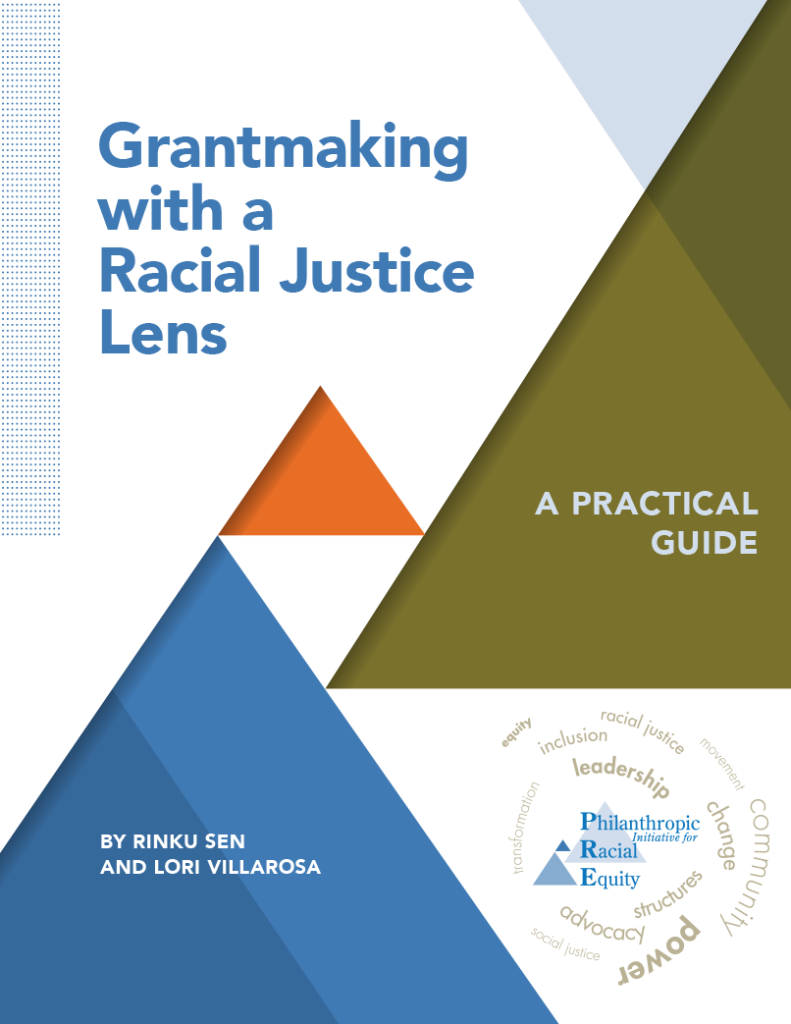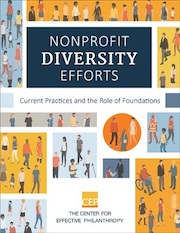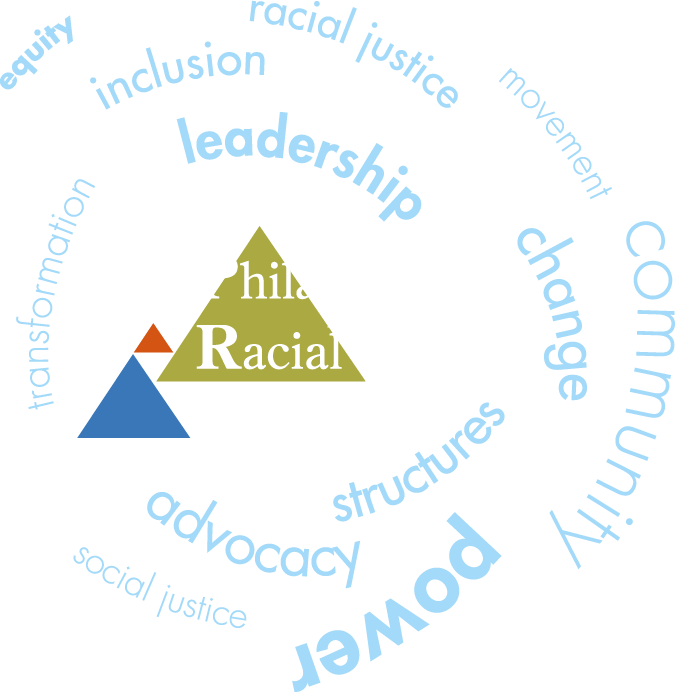.png)
Philanthropy Delaware has established a deep commitment to diversity, equity, and inclusion as one of our key values. As the statewide membership association of grantmakers, Philanthropy Delaware applies an equity lens both internally and externally. We seek opportunities to increase philanthropic and community learning about diversity, equity, and inclusion. Read Philanthropy Delaware's Statement - June 1, 2020
We are on this journey, together.
Philanthropy Delaware is committed to weaving equity into all of our work, we look forward to exploring philanthropy's role in promoting racial equity and social justice. This is an ongoing journey, and we are making progress. We certainly have not "arrived."
Please utilize the following compiled resources with citations for your organization and network. This is far from a comprehensive list but is a starting point on the journey to continue to learn and grow. If you have resources to add, please share them by e-mailing us at info@philanthropydelaware.org.
_________________________________________________________________________________________________________________
What is DEI? It is important to have clearly defined terms to help share understanding and make goals attainable. Diversity: Broadly, it is the comprehensive breadth and depth of human differences. This includes, but is not limited to the demographic mix of a specific collection of people, taking into account elements of difference, such as racial or ethnic groups, LGBT populations, people with disabilities, and/or women. There are many ways to define diversity, which can include many, many other human differences as well. Equity: According to D5 Coalition, improving equity is to promote justice, impartiality, and fairness. This can apply to operations, investments, and/or initiatives. The Interaction Institute for Social Change (IISC) defines racial equity as “all groups have access to the resources and opportunities necessary to improve the quality of their lives and differences in life outcomes cannot be predicted on the basis of race”. Inclusion: The degree to which diverse individuals are able to fully participate. | Click here to view a version of this video with captions (Video above) At the United Philanthropy Forum’s 2018 Annual Conference, several of members, colleagues, and friends, were asked how they define racial equity. Philanthropy Delaware is a proud member of the United Philanthropy Forum. |
__________________________________________________________________ Resources for Individuals Cracking the Codes: The System of Racial Inequity - A film that asks America to talk about the causes and consequences of systemic inequity. Beyond the film itself, the website offers racial equity learning modules to prepare professionals to act on things they’ve seen by explaining issues like systemic inequity and developing skills in communication and healing. Scaffolded Anti-racist Resources (crowdsourced working document, June 2020; continues to be updated) Anti-Racism Resources - Scaffolding resources compiled in a working document to start and continue to learn about anti-racism work. Includes books, podcasts, and other resources. ________________________________________________________________ Putting Racism on the Table |
Who Has a Seat at the Table? To truly confront the issues of systemic inequity, foundations would do well to question: Who is sitting at our table to make the funding decisions? Who sits around the leadership tables of those who receive funding? Do our practices currently perpetuate inequities? How can we best empower individuals to serve their communities by addressing the problems they face? |
_____________________________________________________________
A Change Management & Deep Equity Primer: The What, Why, How & Nuance
This January 16, 2023 publication from Movement Tapestries through GEO Funders (Grantmakers for Effective Organizations) offers insights and guidance for organizations navigating equity-embedded transformations, and the challenges that can come with embarking on such journeys.

The Diversity, Equity, and Inclusion Toolkit for Consultants to Grantmakers: A Resource Guide
Source: National Network of Consultants to Grantmakers, June 2019
Guide through the complexities of their work in diversity, equity and inclusion (DEI) with our DEI Toolkit for Consultants to Grantmakers. Help consultants and grantmakers alike look through issues with a DEI lens. The toolkit consists of key resources recommended by leading experts whose work focuses on DEI and its significant impact in the philanthropic sector.
![]() Racial Equity Tools - Racial Equity Tools is designed to support individuals and groups working to achieve racial equity. This site offers tools, research, tips, curricula and ideas for people who want to increase their own understanding and to help those working toward justice at every level – in systems, organizations, communities and the culture at large.
Racial Equity Tools - Racial Equity Tools is designed to support individuals and groups working to achieve racial equity. This site offers tools, research, tips, curricula and ideas for people who want to increase their own understanding and to help those working toward justice at every level – in systems, organizations, communities and the culture at large.
_____________________________________________________________
Power Moves: Your Essential Philanthropy Assessment Guide for Equity and Justice
The National Committee for Responsive Philanthropy (NRCP) assessment uncovers how your philanthropy can break through barriers to lasting equitable impact with this comprehensive, one-of-a-kind self-assessment toolkit. Source: National Committee for Responsive Philanthropy
equitable impact with this comprehensive, one-of-a-kind self-assessment toolkit. Source: National Committee for Responsive Philanthropy
- Click here for your copy of "Power Moves: Your Essential Philanthropy Assessment Guide for Equity and Justice" This guide will assist in deepening understanding of where an organization is on and equity journey. Click here for the Executive Summary
- Learn from peers in building, sharing and wielding power in practice
- The Ultimate Reading List
- Supplemental Assessment Tools, including a Next Steps Discussion Worksheet and Templates
_____________________________________________________________
Grant Making Practices

Grantmaking with a Racial Justice Lens
Philanthropic Initiative for Racial Equity (May 2019) When the Philanthropic initiative for Racial Equity (PRE), in partnership with GrantCraft, released Grantmaking with a Racial Equity Lens, a few foundations had made racial equity a central focus of their work, but many were still exploring how to incorporate equity into their grantmaking. The daily practice of using a racial equity lens in social change as well as in grantmaking has established a baseline understanding of structural racism and has led to new insights, definitions, and nuances.
Meyer Diversity, Equity, and Inclusion - Technical Assistance
_____________________________________________________________
Policies, Plans, and Best Practices
Diversity, Inclusion and Effective Philanthropy
Source: The Rockefeller Philanthropy Advisors When the concepts of diversity and inclusion are added to basic due diligence, the result can create a philanthropy that is both responsive and efficient. This part of the Rockefeller Philanthropy Advisors' Philanthropy Roadmap series, this guide aims to explain how diversity and inclusion can be used as practical considerations for getting better results.
Source: The Collins Foundation (2016) Sample from the Collins Foundation on their guiding principles and policies through their commitment to employing an equity lens in both internal and external structure as a foundation.
Ten Ways for Independent Foundations to Consider Diversity and Inclusion
Source: Council on Foundations (2010) A guide designed to help foundations consider how more diverse and inclusive practices might advance their mission by making their work more effective and more reflective of communities served. By highlighting 10 ways independent foundations can approach diversity, this guide seeks to spark ideas and launch further dialogue.
Ten Ways for Family Foundations to Consider Diversity and Inclusion
Source: Council on Foundations (2010) This guide highlights 10 ways family foundations can approach diversity, this guide seeks to spark ideas and launch further dialogue and advance their mission by making their work more effective and reflective of communities served.
_____________________________________________________________
Resources and Reports
Racial Equity, Diversity, and Inclusion - United Philanthropy Forum - United Philanthropy Forum’s key strategic priorities include a focus on advancing racial equity, diversity and inclusion in philanthropy. The Forum envisions a courageous philanthropic sector that catalyzes a just and equitable society where all can participate and prosper. It is not possible for us to achieve this vision without addressing racial equity.
What is Racial Trauma and How to Practice Radical Self-Care - Councilforrelationships.org - Charles Muorah, PhD, STL, LMFT Dr. Muorah has successfully helped clients resolve shame and sexual abuse trauma, cultural, racial and other kinds of trauma. He uses brainspotting therapy and narrative approach to process with the client coping strategies, adaptation and resiliency before, during and after the experience.
Cuomo on Systemic Racism in US Economy: Here's the Proof - CNN - Director of the United States National Economic Council, Larry Kudlow denied the existence of systemic racism in the US when asked by a reporter. CNN's Chris Cuomo uses data to prove Kudlow wrong.
Race and Policing - Issue Lab by Candid - This special collection includes research from nonprofits, foundations, and university based research centers, who have not only described and documented the issue but who also provide much-needed recommendations for addressing this chronic and tragic problem.
Racial Equity and Philanthropy: Disparities in Funding for Leaders of Color Leave Impact on the Table
Bridgespan Group, May 2020 - This research, from Echoing Green and Bridgespan, lays bare the racial disparity in today’s funding environment and argues that population-level impact cannot happen without funding more leaders of color.
Racial Equity In Philanthropy - Closing the Funding Gap
Bridgespan Group, May 2020 - Racial bias—both personal and institutional, conscious and unconscious—creeps into all parts of the philanthropic and grantmaking process. The result is that nonprofit organizations led by people of color receive less money than those led by whites, and philanthropy ends up reinforcing the very social ills it says it is trying to overcome. We offer a framework of the barriers leaders of color face when securing funding, along with practical advice for foundation staff.
What are the barriers to increased racial diversity within the third sector?
Acevo, January 2020 - Insights from research into the current barriers to racial diversity in the charity sector, identifying the multiple interlinking barriers to racial inclusivity within the sector that generate a cycle: (1) The lack of Black, Asian and minority ethnic (BAME) people within the third sector, especially in leadership roles, prevents BAME people from feeling included. (2) It also prevents people from being supported and progressing within the sector. (3) People leave the sector early on in their careers. (4) The lack of representation prevents inclusion. Read more here.
Diversity, Equity and Inclusion: The Pillars of Stronger Foundation Practice
Foundation Center & Association of Charitable Foundations, October 2019 - Diversity, Equity and Inclusion: The Pillars of Stronger Foundation Practice is the first report emerging from the Stronger Foundations initiative. It sets out nine characteristics of excellent practice in a foundation, which include collecting data on diversity, implementing DEI practices in funding activities, and making itself accountable to those it serves and supports.
Forging Ahead
The Giving Practice, November 2018 - Can the money that is at the heart of the foundation business model be responsive to a foundation’s important values of diversity, equity and inclusion (DEI)? The answer is yes. This report includes interviews with executives at eight large foundations that have embraced organization-wide DEI efforts. We asked them how DEI can shape the structure of the investing department, the work of investment committees and the choice of investments.
2018 Diversity Among Philanthropic Professionals Report
Funders for LGBTQ Issues, Emerging Practitioners in Philanthropy & CHANGE Philanthropy - This new report and accompanying infographic explore diversity in the philanthropic workforce. Overall, the report finds a statistically significant difference in staff and board diversity between funders with a social justice focus and all other funders. This report lays out the results of the DAPP survey in aggregate form. Social justice foundations were much more likely to have higher representation of LGBTQ people, people of color, and people with disabilities on their staffs and board than other types of foundations.
 Nonprofit Diversity Efforts: Current Practices and the Role of Foundations
Nonprofit Diversity Efforts: Current Practices and the Role of Foundations
The Center for Effective Philanthropy, July 2018 - How do nonprofits see diversity as relevant to their goals? How do they want their foundation funders to be involved in their diversity efforts? In discussions about diversity at foundations, it’s essential that the perspectives of grantees be included in the conversation. That’s why CEP turned to its Grantee Voice Panel of nonprofit leaders to learn more about how nonprofits are thinking about diversity — and how foundations can be most helpful to their grantees, if at all, when it comes to this topic.
Diversity of Asset Managers in Philanthropy: Knight Foundation - Global Economics Group, February 2020 - A Study to Assess the Representation of Women and Racial or Ethnic Minorities Among Investment Firms Used by the Country's Top 50 Charitable Foundations
_____________________________________________________________
Equitable Evaluation
Raising the Bar – Integrating Cultural Competence and Equity: Equitable Evaluation
What's Race got to do with it? Equity and Philanthropic Evaluation Practice
Source: Dean-Coffey, J. (2018). What’s Race Got to Do With It? Equity and Philanthropic Evaluation Practice. American Journal of Evaluation, 39(4), 527–542. https://doi.org/10.1177/1098214018778533
Source: Center for Evaluation Innovation (2018).
Coordinated Entry Systems: Racial Equity Analysis of Assessment Data
Source: C4 Innovations (October 2019)
Nationally, people of color are overrepresented in the homeless populations. Stakeholders and policymakers are identifying the system-level factors that may be contributing to, reinforcing, and perpetuating these racial inequities. In partnership with Building Changes and four CoCs, C4 Innovations conducted an analysis designed to examine the potential for CES assessments to perpetuate racial inequities.
_____________________________________________________________
Advancing Philanthropy Through Feedback
The Value of Constructive Feedback Source: Barr Foundation (September 2017) Why the Barr Foundation seeks and shares candid input from grantees on what it’s like to work with them.
Feedback Is Having a Moment: Philanthropy Can Make It Permanent Source: Giving Compass (April 2019) Asking nonprofits about their feedback, the more funders bring value to the people who are meant to benefit. Click here to see the core principles of feedback.
Tools:
- Funder Feedback: Unfiltered, anonymous feedback from your grantees
- Grant Advisor: Read & Write Reviews of Foundations. Help Colleagues.
_____________________________________________________________
Partners in the Field
Philanthropic Initiative for Racial Equity
 The goal of the Philanthropic Initiative for Racial Equity (PRE) is to increase the amount and effectiveness of resources aimed at combating institutional and structural racism in communities through capacity building, education, and convening of grantmakers and grantseekers. Here are some resources:
The goal of the Philanthropic Initiative for Racial Equity (PRE) is to increase the amount and effectiveness of resources aimed at combating institutional and structural racism in communities through capacity building, education, and convening of grantmakers and grantseekers. Here are some resources:
- What does philanthropy need to know to prioritize racial justice?
- Moving Forward on Racial Justice Philanthropy (Critical Issues Forum Vol. 5, June 2014)
- Catalytic Change: Lessons Learned from the Racial Justice Grantmaking Assessment (Applied Research Center, May 2009)
 D5 Coalition: Advancing Diversity, Equity, and Inclusion in Philanthropy
D5 Coalition: Advancing Diversity, Equity, and Inclusion in Philanthropy
D5 is a five-year coalition to advance philanthropy’s diversity, equity, and inclusion. As our constituencies become increasingly diverse, we need to understand and reflect their rich variety of perspectives in order to achieve greater impact.
Foundations Facilitate Diversity, Equity, and Inclusion: Partnering with Community and Nonprofits (2014) Highlighting eight specific practices for foundations to advance DEI by:
-
Cultivating a deep understanding of the local contexts in which they invest.
-
Ensuring that their missions reflect the value of DEI and that their leaders are strongly driven by the mission.
-
Targeting, through their strategy, the structural issues that limit opportunities for people in underserved communities, and by bolstering the capacity of grassroots organizations that serve those communities.
-
Selecting nonprofit partners whose missions align with their values of DEI.
-
Engaging nonprofits as partners and forging long-term relationships with them.
-
Building nonprofit partners’ capacity to authentically engage their communities.
-
Convening nonprofit partners to discuss DEI, and encouraging authentic collaboration among nonprofit partners to tackle the structural issues that affect communities.
-
Using evaluation as a learning tool to improve their own—and their nonprofit partners’—practice of DEI.
_____________________________________________________________
JOIN THE WORK - Click here to learn more about local Initiatives
Philanthropic Partners Engaged in Deep Racial Justice Work The following partners who have been historically engaged in deep work on racial equity and racial justice:
____________________________________________________________ Additional Research and Reports
This profile provides data and historical context for Wilmington's stark racial wealth divide. Specifically, it examines the distribution of wealth along racial lines across four key outcomes: households finances, employment and business ownership, housing and homeownership, and educational attainment. “Economic inequality has expanded over the past decade, shutting the windows of opportunity to millions of Americans. In urban centers, this growing inequality has manifested through gentrification and the continued concentration of poverty in communities of color.” – Racial Wealth Divide in Wilmington, Prosperity Now and JP Morgan Chase, March 2019 Rising Wealth Inequality: Causes, Consequences, and Potential Responses (University of Michigan, et. al. 2015) _____________________________________________________________ |
Contact Us: | Address: | Copyright Philanthropy Delaware, Inc. 2017 |




